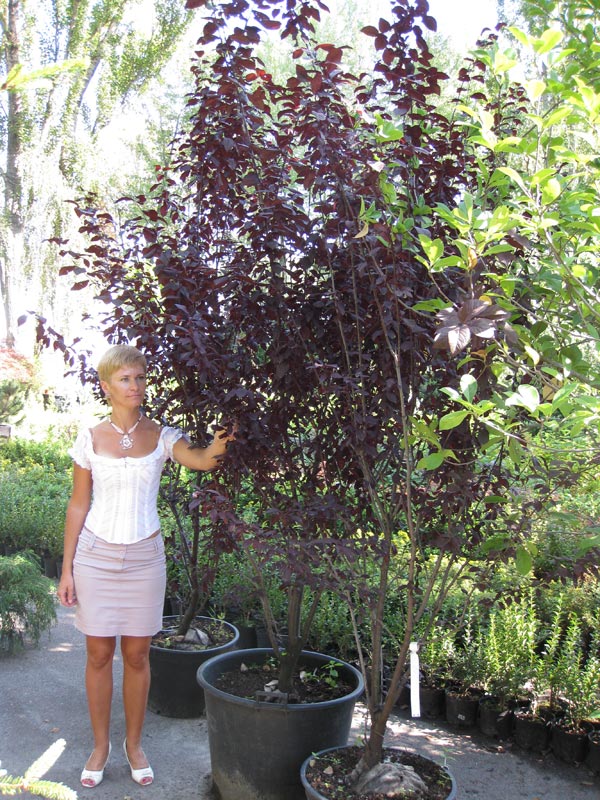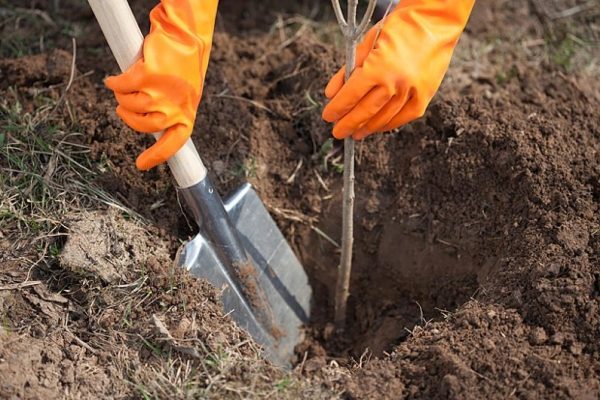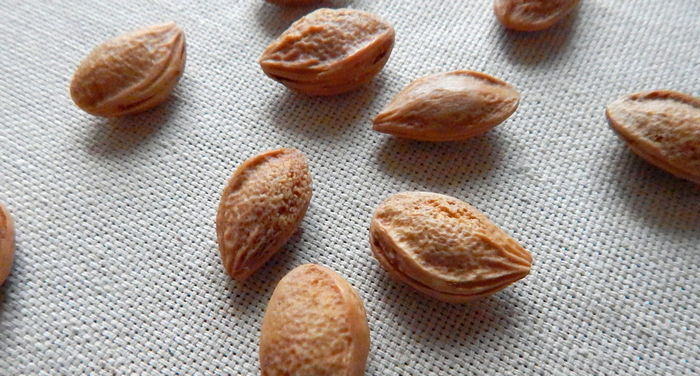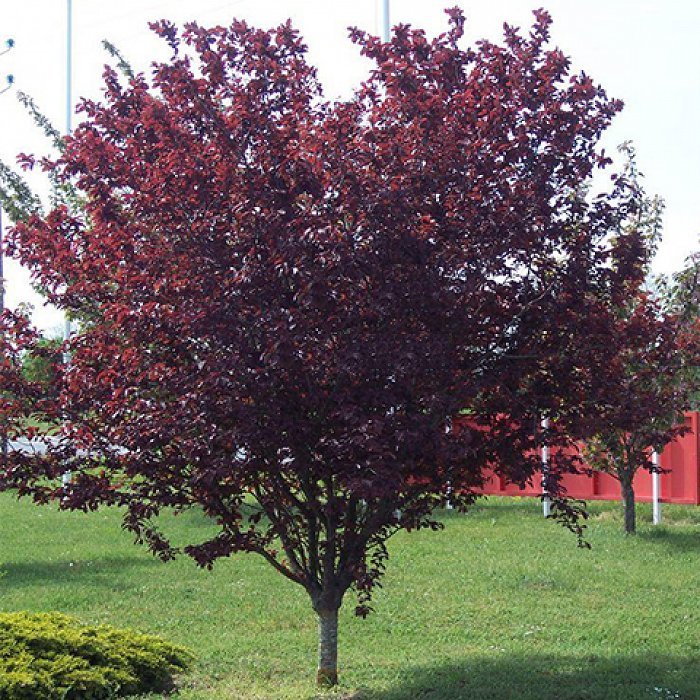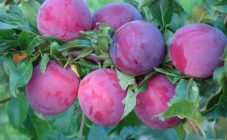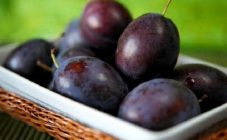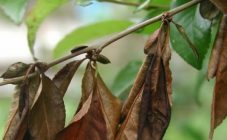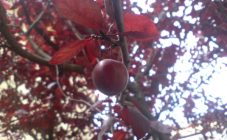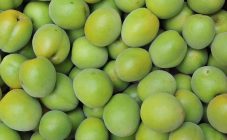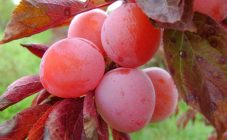Content:
The spreading plum belongs to those crops that easily adapt to changing conditions. This tree is fast-growing, its fruits are excellent in taste. Due to this, the plant is very popular with gardeners. Has spread almost all over the world. In Russia, it grows mainly in areas with a milder climate.
Another name for this tree is cherry plum, or cherry-bearing plum. It is one of the original domestic plum species.
Often, gardeners have a question, what is the difference between cherry plum and plum. And although in this case these concepts are used interchangeably, there is still a fundamental difference. Cherry plum differs from plum as follows:
- it is a specific term, while plum is a generic term;
- ripens in late summer or early fall, but never mid-season;
- mainly grows in the southern regions;
- has a bright color: from yellow to red.
So, in this particular case, cherry plum will still be described. It is not so difficult to distinguish it now.
Characteristics and description
The culture is represented by trees with one or more trunks, with a height of 3 to 10 meters. The crown is round or pyramidal, the roots are strong, well developed. On average, cherry plum lives up to 50 years and has a high yield. With proper care and favorable conditions, about 40 kilograms of plums can be harvested from one tree. But the plant begins to bear fruit only 3-4 years after planting.
Plums are round or slightly oblong. Fruit weight ranges from 6 to 60 grams, depending on growing conditions and quality of care.
The peel has a whole palette of shades from pale yellow to deep purple. But this variety has become popular thanks to the dark blue fruits with a black tint, which allow at first glance to distinguish this cherry plum from its other relatives.
Due to this property, a hybrid culture is often used as a decoration for a plot. Plum spread wide Nigra today is found in many variations of landscape design. Its delicate pink petals against the background of crimson leaves pleasantly surprise the eye. Such an unusual combination will definitely not go unnoticed. Therefore, those who want to impress others should plant such a tree as the Nigra plum on their site.
Cherry plum, together with a special diet, is simply irreplaceable in eliminating heartburn, including chronic.
Features of agricultural technology
Valuable advice for novice gardeners: it is worth taking seedlings only those that are grown in the same region where planting is planned. Otherwise, the young may not take root.
The spread-out plum is very sun-loving. The more heat and light it receives, the larger and sweeter it produces the harvest. The optimal place for its cultivation and reproduction is the southern or southwestern part of the site. It is advisable to hide the plant from the winds near some wall.
Cherry plum loves moist, fertile loamy soil with good drainage system.The root of the tree goes 40 cm deep, so a close occurrence of groundwater is undesirable, a maximum of 1 m.If the site does not allow this condition to be met, an artificial hill can be created.
It is customary to dig holes for planting 2 m from each other. The depth and diameter of each should be at least 60 cm. When the pits are ready, they need to be filled with a nutrient mixture. For its preparation, superphosphate and potassium sulfate 300 and 40 grams, respectively, are added to the ground.
A mound is formed in the pit and the roots of the tree are laid out over it. The seedling must be fixed so that the root collar is flush with the ground. Then they cover everything with the remaining fertile mixture.
It is important to adhere to the basic rules. The substrate should be easily air and moisture permeable. That is why clay soil must be diluted with sand and sandy soil with turf.
Spreading plum - adherent of neutral soil. If the soil does not meet this requirement, you need to make some adjustments. It is worth adding chalk or limestone to acidic soil, and gypsum to alkaline soil. Not all summer residents know what the acidity of the soil is on their site. To clarify the picture, you can use special indicators. There are similar devices in any garden store.
Particularly painstaking summer residents grow cherry plum from the bone. It is possible, but troublesome. The more common method is grafting into another crop. The procedure is carried out in the spring. Cuttings are used on which buds have not yet blossomed.
An excellent result is obtained by crossing cherry plum with some sort of plum. You can get several benefits at once:
- several varieties can be grafted per tree; this group type of cultivation will simplify pollination and significantly save space on the site;
- if you graft a stalk on an adult plant in the spring, then in a year you can wait for the first harvest;
- the unusual appearance of the tree, when fruits of different colors are on the branches;
- due to the properties of the plum, on which it is customary to plant cherry plum, the winter hardiness of the latter is significantly increased.
The optimal result can be achieved if the plum varieties Nigra, Kuban comet and Traveler are grafted onto one tree. It is these species that are capable of self-pollinating each other well.
Don't forget about feeding. A plum tree will be grateful if you fertilize the soil three times a year (after the snow melts, at the time of fruit formation and in the middle of summer). It is best to follow a specific sequence. In the spring, it is recommended to add minerals and ammonium sulfate to the ground. Calcium ammonium nitrate is shown for acidic soil. You can't do without organic matter. Manure and compost remain irreplaceable. During the summer feeding period, phosphorus-potassium fertilizers are well suited.
Advantages and disadvantages
Any garden plant has its own advantages and disadvantages. After reviewing them, many gardeners conclude whether this culture is suitable for them or not. To decide on a splayed plum, you should study its strengths and weaknesses.
Benefits:
- the ability to quickly adapt to the environment,
- good taste,
- versatility of the use of fruits,
- decorative appearance,
- high content of vitamins,
- healing properties,
- height of trees from low to high.
Disadvantages:
- self-infertility,
- exactingness to the fertile composition of the soil,
- the need for frequent watering,
- defenselessness against drafts,
- dependence of taste on the region of growth: the more sun and heat, the sweeter the fruit.
Of course, the splayed cherry plum is quite demanding to care for. But the effort will not be in vain. The tree will respond to every expression of care with a good harvest. From sweet fruits, you can make a unique cherry plum jam, which will remind you of the bright summer on cold winter evenings and give all the benefits.

